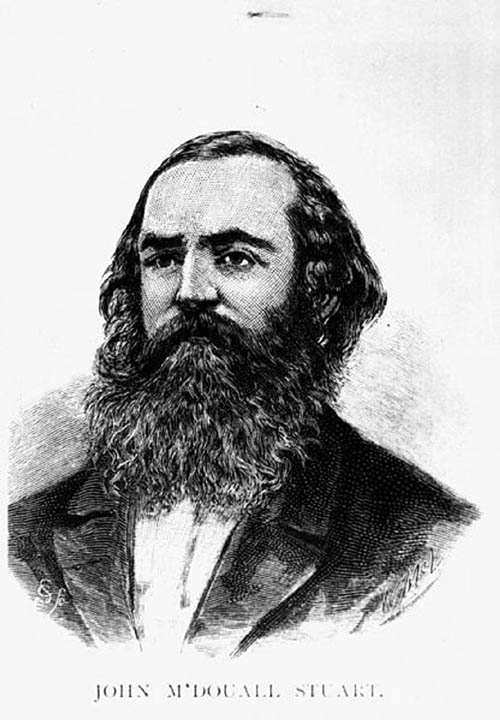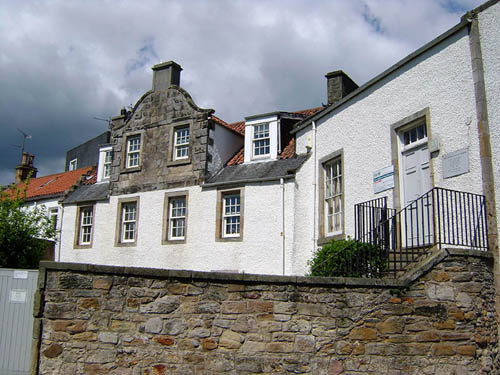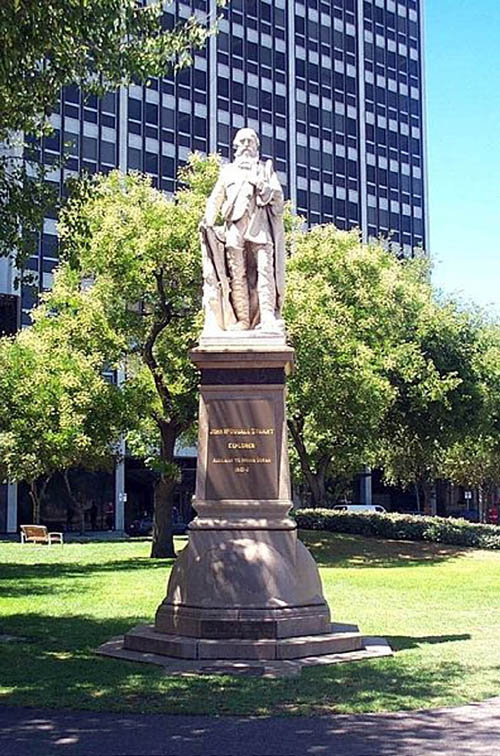THE hunt is on for descendants of a “forgotten” Scottish explorer who became the first man to walk across Australia.
John McDouall Stuart – who also mapped the centre of the continent – is a hero in Australia and there is a statue to him in Adelaide.
But his birthplace museum in Dysart, Fife, has closed due to lack of interest and been turned into a holiday home.

Now the owners, Fife Historic Buildings Trust, are appealing for relatives of the explorer to come forward and help mark the opening of the property.
Stuart was born in the house on 7 September 1815.
Both his parents died during his teens leaving him in the care of his relatives and friends.
He moved Down Under when he was just 23-years-old after graduating from the Scottish Naval and Military Academy as a civil engineer.
He went on to secure a job as a surveyor where he was noted for his extraordinary and impeccable accuracy.
It then took Stuart five years and six attempts to cross the centre on horseback between 1858 and 1862.
Along with 9 other explorers and 71 horses Stuart finally succeeded in crossing Australia from south to north on his final attempt.
The 3,000km journey started on 23 October 1861 from North Adelaide and ended on 24 July 1862 just east of Chambers Bay (present day Darwin) in the Northern Territories.
But the trip left him with health problems and when he returned to the UK he died in London in 1866 aged 50.

Despite his obscurity in Scotland, Stuart is celebrated in Australia as their “greatest inland explorer”.
In March 2010, the Alice Springs Freemasons commissioned a 4 metre high statue of Stuart to mark the 150th anniversary of Stuart’s fourth expedition where he reached what is now Alice Springs.
The statue stands proudly in Victoria Square in the centre of Adelaide.
William Hardman, editor of The Journals of John McDouall Stuart, published in 1864, wrote: “The explorations of Mr John McDouall Stuart may be truly said, without disregarding his brother explorers, to be amongst the most important in the history of Australian discovery.”
His birthplace in Dysart was used as a museum until three years ago when a lack of visitors encouraged bosses to convert the building into a modern holiday home.
They cannot even find any long lost relatives of the adventurer – who was the youngest of nine children – to attend the opening of the property this spring.
Alan Lodge, manager of Fife Historic Buildings Trust, said: “We’re really keen to find anyone connected with John McDouall Stuart so that they can join us when we celebrate the opening of the apartment and help us learn more about this amazing character.
“We know that Stuart was the youngest on nine children so he may well have some living descendants in Fie and further afield.”
After three years of renovation works the former museum is now an apartment that occupies two floors of the three-storey building.
An external staircase grants access to a living/dining area and kitchen – there is also a double bedroom and bathroom on the upper level.
There will only be a bronze plaque – in the shape of Australia – erected in a garden opposite the flat to acknowledge Stuart’s achievements.

Christine May, chairwoman of the Fife Historic Buildings Trust, said they expected Australians to travel halfway across the globe to stay at the property.
She said: “It just wasn’t getting any Scottish visitors.
“It’s more popular with Australian tourists who know Stuart more.
“So the flat will give them the chance to stay in the same place where their favourite explorer stayed.”
Dr Iain Hutchison of the Economic & Social History Society of Scotland said Dysart should consider twinning with an Australian community.
He said: “I don’t think you can blame the Scottish people for not being familiar with John McDouall Stuart.
“But limited knowledge of him perhaps highlights the presence of opportunities to be pursued by Dysart, Kirkcaldy, and indeed Fife.
“He is commemorated in such locations as Adelaide, Darwin and Alice Springs – has a link-up between the likes of Dysart or Kirkcaldy and Alice Springs ever been considered?”
He added: “It is possible both locations could benefit from heritage tourism around the theme of John McDouall Stuart’s pioneering explorations.”
After his first expedition – on which he discovered the water source now known as Stuart’s Creek – the explorer was awarded a gold watch by the Royal Geographical Society (RGS) in 1858.
And after Stuart completed his final south-to-north journey the RGS praised him with the Patron’s Medal.
Sir David Livingstone is the only other explorer to have earned both awards.
A spokesman for RGS said: “Yes, we can confirm that Livingstone was the only other Scottish person to receive the awards.
“John McDouall Stuart was awarded his medal in 1850 and then he received the chronometer [watch] in 1855.”
TV nature man Ray Mears even gave survival insights of Stuart’s south-to-north journey to highlight the hardship during an episode of Ray Mears Goes Walkabout.
It is thought Stuart may have descendants living south of the border because when he returned to the UK he lived with his sister and brother-in-law in Kensington, London.
After his death Stuart was buried at Kensal Green Cemetery in north-west London.
